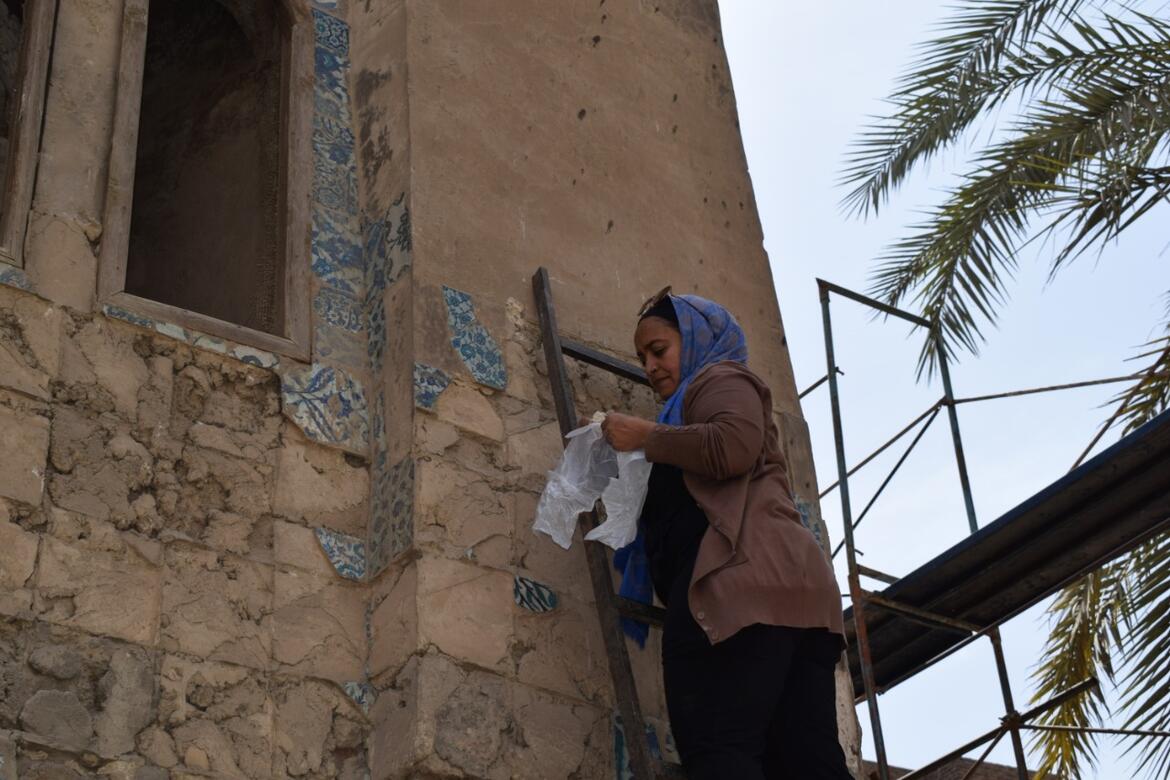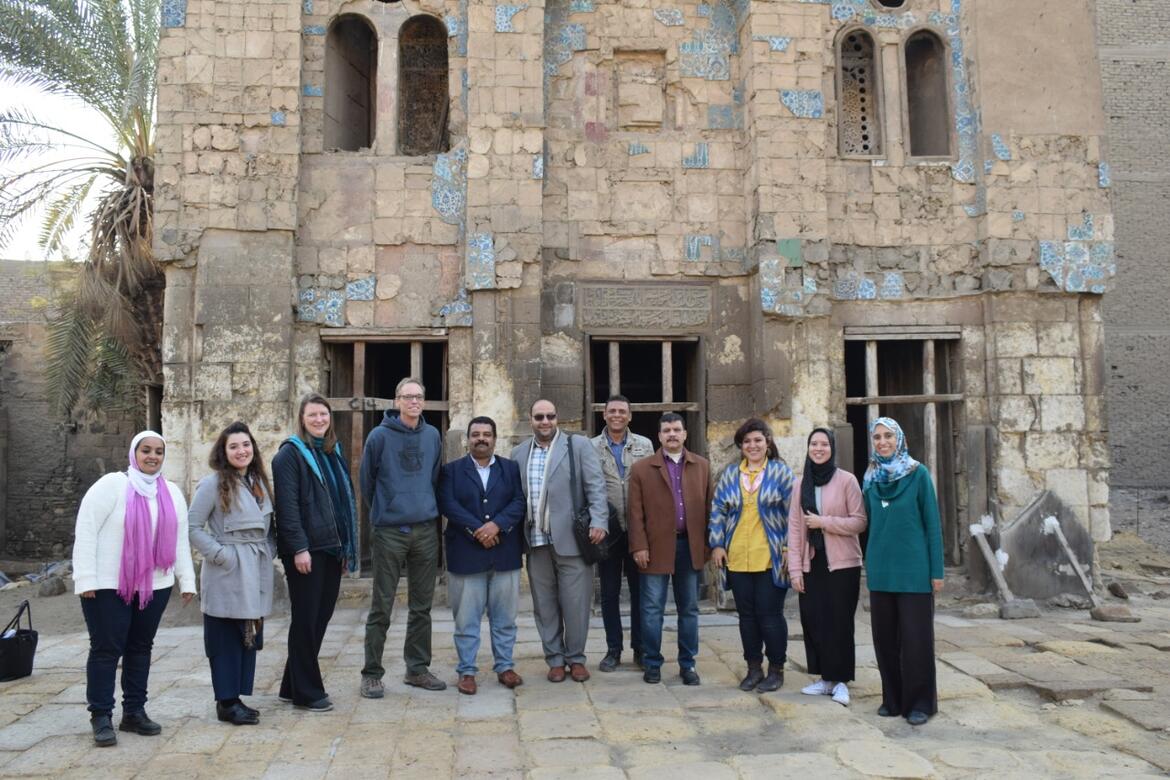On My Watch: Amira Souliman and Abeer Saed Eledeen at Takiyyat Ibrahim al-Gulshani in Cairo, Egypt

Among the bustling city streets of Cairo lies a sleeping giant adorned with beautiful blue tiles, intricately decorated with hand-painted geometric designs. Takiyyat Ibrahim al-Gulshani was the first Sufi religious foundation established in Cairo after the Ottoman conquest in 1517, and the first to be named takiyyat, a residential religious complex, in its foundation deed. The site was abandoned in recent years, following natural disaster and political uprisings, and today, some local authorities have a new vision for its future. That’s where Amira Souliman and Abeer Saed Eledeen come in.
Souliman and Eledeen are part of the next generation of conservators, both early in their respective careers but filled with enough passion for their craft to rival even the most experienced in their field. “They are not just stones,” says Souliman describing what first attracted her to the field of cultural conservation, “but souls and stories embodied in these buildings.”

Souliman and Eledeen both graduated with degrees from the Faculty of Archaeology, Conservation Department at Cairo University. They are now responsible for documenting Takiyyat Ibrahim al-Gulshani—utilizing historic reports, studies, drawings, photographs, and researching archival materials to assess the current condition of the site and guide its future use. World Monuments Fund (WMF) is supporting the initial research and documentation, working with Egypt’s Ministry of Antiquities to improve documentation standards and define a conservation action plan for the complex that explores different possibilities for its adaptive reuse.
Souliman recalls the first time she saw the abandoned Takiyyat Ibrahim al-Gulshani. “From that moment,” she says, “I fell in love with this place and all of its details.” Working onsite has become a sort of ceremonial experience for Souliman. “For me, every time I go up to the mausoleum, I feel inspired by the colorful tiles on the façade. Then, when you enter, you find amazing detail, writings, drawings, and paintings on the walls.”
For Eledeen, the experience is very similar, “I’m emotionally attached to the Takiyyat, and I feel energy is transmitted through every part of the place.”
As for what lies beyond the preservation of the site, both Souliman and Eledeen have big hopes for the future—at Takiyyat and other historic sites of Egypt. “For me,” Souliman says, “to conserve and reopen the Takiyyat is the perfect way to celebrate and strengthen its history and legacy.”
“My dream,” Eledeen adds, “is to tour the old city with a group of children, tracing the history of our identity through buildings and preserved monuments.”





